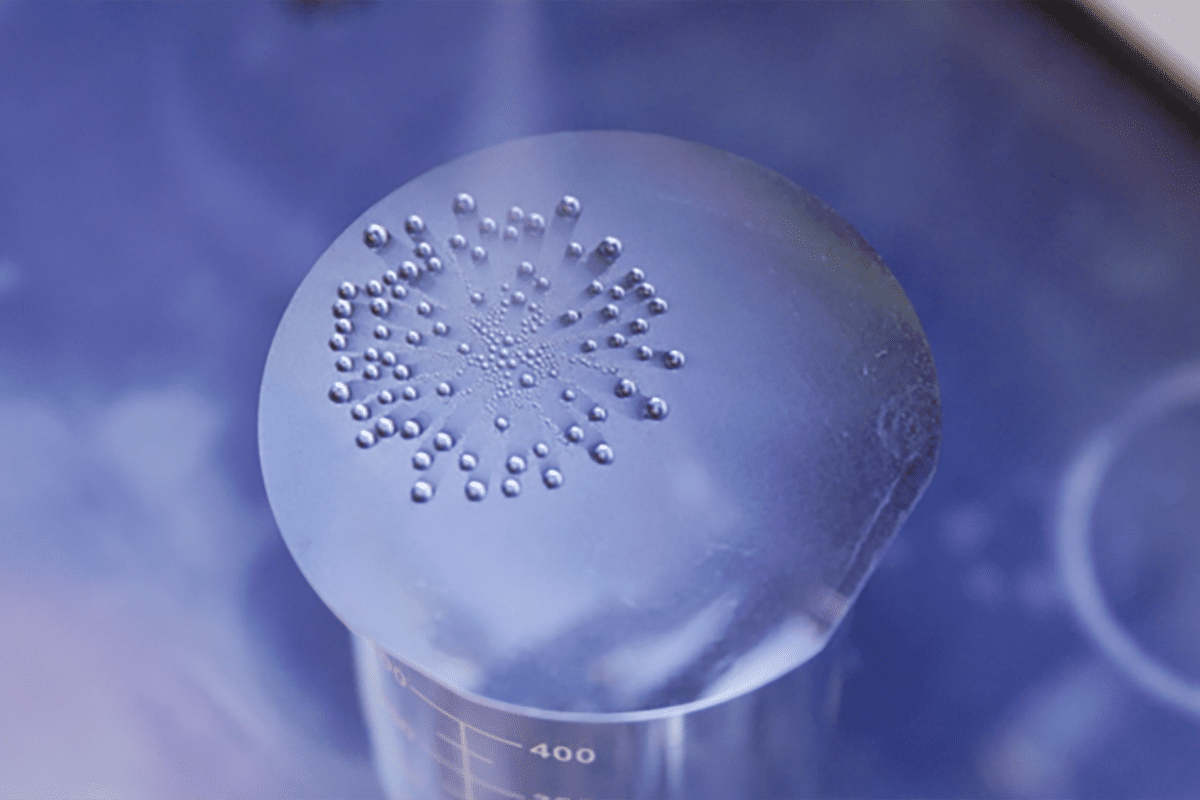
An investigation by KAUST researchers appears to set the record straight on the formation of hydrogen peroxide in micrometre-sized water droplets, or microdroplets, and shows that ozone is the key to this transformation1, 2.
The air-water interface is a crucial site for numerous natural, domestic and industrial processes such as ocean-atmosphere exchange, cloud and dew formation, aerated beverages and bioreactors. Yet, probing chemical transformations at the air-water interface is challenging due to the lack of surface-specific techniques or computational models.
In collaboration with PhD students Adair Gallo Jr and Nayara Musskopf, research scientist Peng Zhang utilized an ultrasensitive fluorescence-based assay that can detect aqueous H2O2 with an almost 40-times lower limit of detection than the original assay. They found no H2O2 in condensed microdroplets from hot water, but up to one micromolar H2O2 in microdroplets from commercial ultrasonic humidifiers. With this key insight, the team investigated sprays.
Computer simulations and high-speed imaging demonstrated that bowl-shaped shock waves formed in sprays, but these conditions were inadequate to chemically transform water into H2O2.
“Questions remained: where did the rest of the H2O2 come from in the condensed and sprayed microdroplets investigated in California, and why didn’t we see it at KAUST?”, says lead author Gallo Jr. After several failed attempts to explain the conundrum, the team turned to ambient ozone as a potential actor in H2O2 formation. “I had a Eureka moment while reading papers from 40 years ago. They had listed ambient ozone as an interferent in aqueous H2O2 measurements”, explains Mishra.
To control ambient ozone levels, the researchers used an ozone generator and mixed the resulting gas with nitrogen gas before introducing it into a glovebox. They observed that increasing the ozone concentration enhanced H2O2 formation. “We were so happy because this was the answer,” says co-lead author Musskopf.
While ambient ozone concentrations remain below 2 parts per billion inside our glovebox, they can exceed 80 parts per billion in California, according to records collected by the Environmental Protection Agency. Although ozone minimally dissolves in water, the enhanced surface area of microdroplets allows more ozone to be dissolved and quickly react to form H2O2. “There had to be something related to the geography of the place, an environmental difference between our location in Saudi Arabia and California,” Gallo Jr says.
Together, these data disprove that water spontaneously transforms into H2O2 at the air-water interface. “We have defended textbook physical chemistry and what we know about water”, Mishra concludes.







